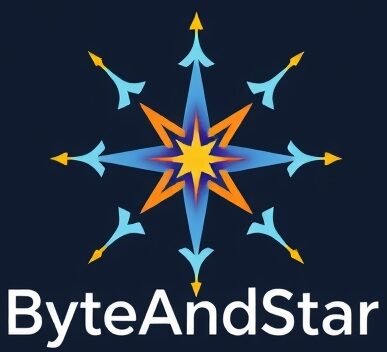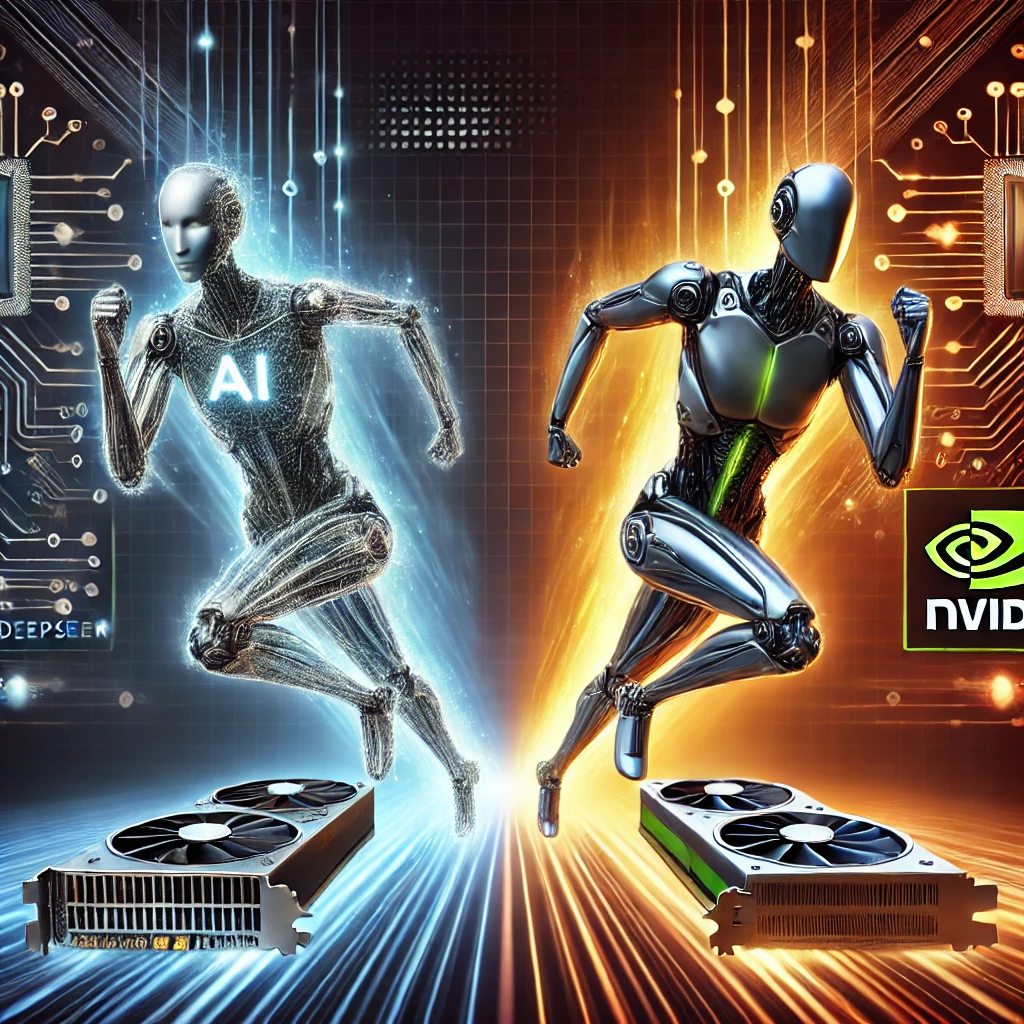The Arrival of DeepSeek’s Disruptive AI Model 🔄
Picture this: A sleek new player enters the arena of artificial intelligence, armed with cutting-edge algorithms and groundbreaking efficiency. DeepSeek’s AI model has emerged as a formidable contender in the race to dominate AI workloads, bringing innovations like real-time data processing efficiency and enhanced energy savings that directly challenge Nvidia’s long-standing reign in both inference and training domains. But what does this mean for Nvidia—the undisputed heavyweight in AI hardware?
DeepSeek’s model boasts several advantages, including its hybrid neural processing unit (NPU) design. This architecture uniquely combines sparse matrix acceleration with advanced compression techniques, optimizing it for scalable AI applications. This enables it to achieve lower latency in real-time data streams while consuming significantly less power compared to traditional GPUs. Such innovation sets it apart in industries demanding fast, energy-efficient inference. This could disrupt Nvidia’s dominance, as businesses increasingly seek sustainable, cost-effective solutions. By addressing specific gaps like real-time data processing at scale, DeepSeek’s innovation isn’t just another AI tool; it’s a potential game-changer for industries ranging from healthcare to autonomous vehicles.
Could this spell trouble for Nvidia? Or might it inspire the tech giant to push its limits and innovate further? Let’s dive in.
Competitive Edges: Why DeepSeek’s Model Stands Out ✨
DeepSeek’s AI model shines in three crucial areas:
Energy Efficiency – AI workloads, especially inference tasks, demand significant power. DeepSeek’s model offers a 30% reduction in energy consumption compared to traditional Nvidia GPU setups—a massive draw for eco-conscious enterprises.
Flexibility in Deployment – Unlike Nvidia’s GPU-centric ecosystem, DeepSeek’s model works seamlessly with various hardware architectures. This flexibility attracts customers who prefer not to be tied to Nvidia’s CUDA platform.
Cost-Effectiveness – By leveraging alternative manufacturing techniques and open-source tools, DeepSeek provides businesses with a cheaper route to advanced AI capabilities.
However, no model is flawless. DeepSeek’s model dependency on certain niche chip designs could limit scalability, particularly in scenarios demanding massive parallel processing—an area where Nvidia excels.
Nvidia’s Strategic Moves: The Road Ahead ⚖️
DeepSeek’s advancements force Nvidia to reevaluate its strategies. Here’s how Nvidia could adapt:
Pricing Adjustments
Nvidia’s premium GPUs have long been the gold standard for AI tasks, commanding over 80% of the AI hardware market as of 2024, according to a report by Gartner. This dominance stems from their unmatched performance in handling both training and inference workloads. But as DeepSeek’s model gains traction, Nvidia may need to offer tiered pricing to capture budget-conscious customers without diluting its brand value. A subscription-based model for accessing GPUs on-demand could also be a viable option.
Focus on Training Workloads
DeepSeek’s model dominance in inference tasks leaves training workloads relatively untouched—a niche Nvidia has mastered due to its GPUs’ unparalleled ability to handle complex computations. Nvidia’s hardware is specifically designed to support large-scale data models, enabling faster and more accurate training for deep learning applications, which makes it a preferred choice for enterprises in fields like healthcare, finance, and autonomous vehicles. By doubling down on large-scale training, Nvidia could consolidate its leadership where DeepSeek currently lags.
Evolving the CUDA Ecosystem
Nvidia’s CUDA platform is a fortress of innovation, but its exclusivity could alienate customers seeking flexible, interoperable solutions. Introducing interoperability with other ecosystems could dissuade customers from exploring alternatives like DeepSeek model.
Building Partnerships
Collaborations with AI startups and cloud providers like AWS or Google Cloud could solidify Nvidia’s foothold in the market. Co-developing solutions tailored to industries like finance or logistics would make Nvidia indispensable.
Shaping Nvidia’s Innovation Pipeline 🎨
To stay ahead, Nvidia must rethink its R&D priorities. DeepSeek’s emergence highlights the need for:
Next-Gen GPUs – Nvidia should accelerate efforts in creating GPUs with improved energy efficiency and tailored capabilities for both training and inference. Innovations like AI-specific tensor cores could bridge the gap.
AI-Powered Software Tools – DeepSeek’s open-source approach sets a high bar. Nvidia could counter this by launching AI tools that simplify model training, debugging, and deployment.
Custom Silicon Solutions – As the semiconductor industry explores domain-specific architectures, Nvidia might need to develop chips optimized for niche applications like generative AI or real-time analytics.
Quantum AI Research – While speculative, exploring quantum AI could ensure Nvidia remains a pioneer in untapped areas of computational efficiency.
Risks and Opportunities: A Balanced Outlook 🔍
The rise of DeepSeek’s AI model poses both challenges and opportunities for Nvidia:
Risks: Nvidia risks losing market share in AI inference if DeepSeek’s solutions gain widespread adoption. The growing emphasis on open ecosystems also threatens Nvidia’s closed-platform strategy.
Opportunities: DeepSeek’s disruption could push Nvidia to accelerate innovation, focusing on edge computing GPUs, modular AI accelerators for diverse deployment needs, and enhancing the CUDA platform to seamlessly integrate open-source ecosystems. These focused efforts would allow Nvidia to address specific market demands while retaining its competitive edge. By refining its product portfolio and fostering partnerships, Nvidia could turn competition into a catalyst for growth.
External Insight: AI and Hardware Trends
Final Thought: A Thriving Future ☀️
DeepSeek’s Model advanced AI model serves as both a challenge and an opportunity for Nvidia to redefine its leadership in the evolving AI hardware landscape. History shows that great companies don’t just survive competition; they thrive because of it. By embracing change, diversifying its offerings, and doubling down on innovation, Nvidia can maintain its leadership in the ever-evolving AI ecosystem.
The battle is just beginning. Who will shape the future of AI? One thing is certain: the race will push boundaries and fuel groundbreaking advancements for years to come.
You can read more blogs on AI at ByteAndStar.
DeepSeek’s model excels in energy efficiency, flexibility, and cost-effectiveness, challenging Nvidia’s dominance in AI workloads.
Nvidia’s CUDA platform offers unmatched optimization for GPUs but risks alienating customers due to its exclusivity, unlike DeepSeek’s more open and hardware-flexible ecosystem.
Nvidia dominates training workloads with its powerful GPUs designed for large-scale computations and continues to lead in market share and enterprise adoption.
Nvidia could adjust its pricing strategy, focus more on training workloads, enhance its CUDA ecosystem, and foster industry partnerships to retain its edge.
Nvidia could lose market share in AI inference and face challenges from customers seeking open and cost-efficient solutions, which could impact its dominance.
Increased competition drives innovation, resulting in more efficient, diverse, and affordable AI solutions that can address a broader range of industry needs.

